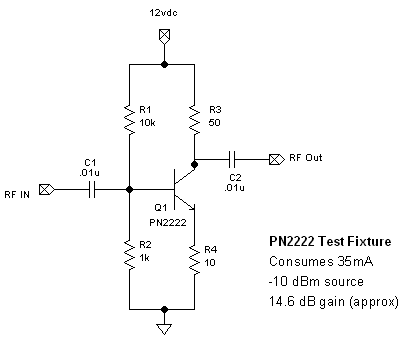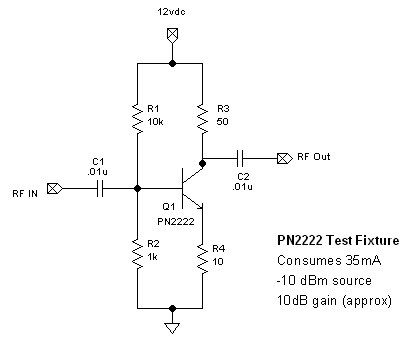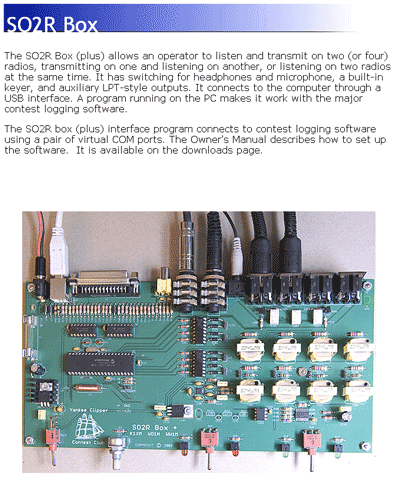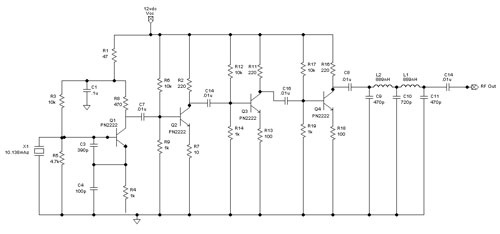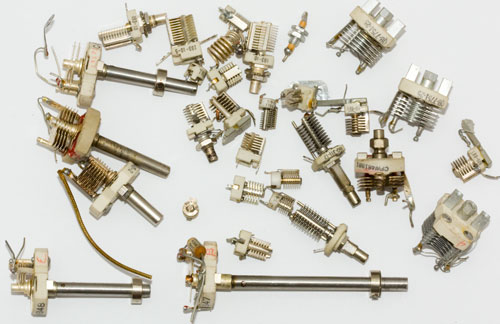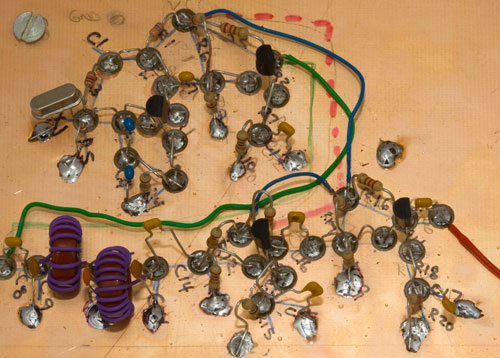Push-pull amp
I have some push-pull questions so I am going to build a model something like this:

I want to play with a simple push-pull NPN amplifier running in class AB. I
have big stash of PN2222 so I want to use it because it is on hand. (I know that it
is a crummy RF part... but this is an R&D activity for some personal growth...
I will move on to real parts once I have a bit more experience.)
PS... the I have posted some updates in red to my own
questions below.
Q1. What size inductor do I need for L1?
In this phase L1 is not critical to choke the RF from the
power supply.
If you use an inductor, pick a value that is going to be at least 150 XL ohms at the
lowest frequency and a self resonant frequency higher than the highest frequency you
intend to use.
Q2. I would guess that L1 could be replaced with a resistor since it is really controlling
the current at the collectors. I need to understand why the example has
an inductor in there since it is not a tuned circuit.
150 ohm resistor would probably be fine.
If you use an inductor, pick a value that is going
to be at least 150 XL ohms at the lowest frequency and a self resonant frequency higher
than the highest frequency you intend to use.
Q3. How do I determine the output impedance? (It might be helpful to know if I want
to feed a 50 ohm filter.)
In theory it should look something like:

Hmmm... more reading before I can visit the work bench.



I want to play with a simple push-pull NPN amplifier running in class AB. I
have big stash of PN2222 so I want to use it because it is on hand. (I know that it
is a crummy RF part... but this is an R&D activity for some personal growth...
I will move on to real parts once I have a bit more experience.)
PS... the I have posted some updates in red to my own
questions below.
Q1. What size inductor do I need for L1?
In this phase L1 is not critical to choke the RF from the
power supply.
If you use an inductor, pick a value that is going to be at least 150 XL ohms at the
lowest frequency and a self resonant frequency higher than the highest frequency you
intend to use.
Q2. I would guess that L1 could be replaced with a resistor since it is really controlling
the current at the collectors. I need to understand why the example has
an inductor in there since it is not a tuned circuit.
150 ohm resistor would probably be fine.
If you use an inductor, pick a value that is going
to be at least 150 XL ohms at the lowest frequency and a self resonant frequency higher
than the highest frequency you intend to use.
Q3. How do I determine the output impedance? (It might be helpful to know if I want
to feed a 50 ohm filter.)
In theory it should look something like:

Hmmm... more reading before I can visit the work bench.

